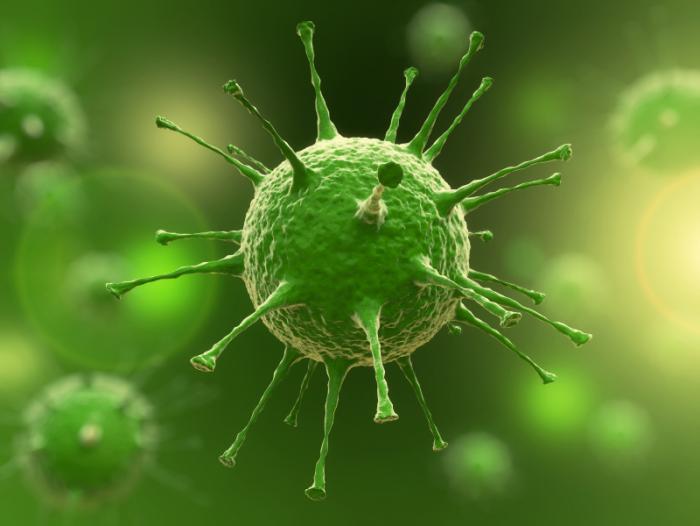First discovered by Russian botanist D.J. Iwanowski in 1892, viruses are the most primitive cellular and non-cytoplasmic agents that cause infections. He discovered it in an infected tobacco plant. However, the term "virus" was first coined by M.W. Beijerink in 1898, after which W.M. Stanley, an American chemist, isolated crystal of TMV or Tobacco Mosaic Viruses in 1935. Many people don't know much about viruses, especially their attributes. Keep reading to find the truth about the characteristics of viruses and the way they can act as both living and non-living things.
Basic Characteristics of Viruses You Need to Know
1. Size
All those viruses that have been studied until now have the diameter in the range of 20 to 300 nanometers with their length ranging from 20 to 14000 nanometers. One nanometer equals a billionth of a meter, which means a virus can be smaller than the diameter of your single strand of hair. It is, therefore, important to use specially designed microscopes to study viruses.
2. Structure
Every virus has an outermost protective protein coat called the capsid. It encloses the genome and the proteins. The proteins in viruses help determine their shape. In fact, viruses can be rod-shaped, filamentous, spherical, helical or icosahedral in shape.
3. Nomenclature
All viruses contain deoxyribonucleic acid (DNA) or ribonucleic acid (RNA) as their genome, and this determines if they are DNA viruses or RNA viruses.
4. Shape
Viruses are divided into five different morphological types or shapes.
- Helical: It looks like a spiral staircase. These viruses are always arranged helically around their genome.
- Prolate: It is actually an icosahedrons virus but has an elongated axis.
- Envelope: These viruses have an envelope around the capsid with helical morphology.
- Complex: These viruses can have a combination of structures and shapes.
- Icosahedra: An Icosahedral virus can have up to 20 equilateral triangle faces and up to 12 corners. Most animal viruses are spherical with icosahedral symmetry or icosahedral.
5. Life Cycle
While learning about the characteristics of viruses, it is also important to learn about their life cycle. It is important to understand that a virus can reproduce only when it enters the host organism. It attacks the cells and uses six steps of replication. Basically, it will go through:
- Attaches itself to the host
- Penetrates the host
- Uncoats its genetic material for the preparation of replication
- Starts replicating
- Be assembled after the completion of replication
- Releases themselves after assembly
6. Infection
One of the characteristics of viruses is that they can infect other fungi, microbes, plants, animals and humans. Viruses that infect fungi are called mycophages, whereas bacteriophages are viruses that infect only bacteria.
7. Host Range
Viruses are the most abundant biological entities on Earth and can infect every type of cellular life. However, certain types of viruses can infect only a limited number of hosts. Smallpox virus is a great example of species-specific viruses that can only infect humans. Rabies and many other viruses can infect different specifies of mammals. Viruses that infect plants pose no threat to animals, and most viruses that may infect animals don't usually infect humans.
8. Effects on the Host Cell
Once viruses infect you, they can affect the host cell in so many different ways. These effects are called cytopathic effects. Most virus infections end only after the death of the host cell. Some of the most common causes of death include changes to the cell's surface membrane, cell lysis and apoptosis. Some viruses don't always cause any changes to the infected cell, and these cells continue to work normally so long as the virus remains inactive. In some cases, the virus can even remain dormant for several years.
Do You Know These Interesting Facts About Viruses?
Now that you have learned different characteristics of viruses, it is time to find out a bit more interesting facts about viruses.
- Mimi viruses are the biggest known viruses with size up to 400 nanometers and genome up to 1,200,000 nucleotides in length. They contain codes for more than 900 proteins.
- Circoviruses are the smallest known viruses with size up to 20 nanometers and viral genome 1,700 nucleotides in length. They contain codes for only two proteins.
- Not all viruses are harmful; in fact, bacteriophages are actually useful because they kill bacteria.
- Most viruses will cause infection and disease. Viruses are the culprits of flu and colds, and other common diseases like measles, chickenpox, German measles and mumps. HIV is also a virus and can cause AIDS.
- Once you have had a viral infection, you don't usually have it again because your body can create immunity.
- You cannot have a vaccine for colds because so many different viruses can cause colds.
- There are so many types of flu viruses, which is the reason that flu vaccines change constantly.
- Viruses can infect plants and make flowers and leaves to change color.
- Antibiotics don't prove effective again viral infections, so a cold or flu usually gets better on its own.
- Viruses may transmit through coughing and sneezing, which is why it is important to use a tissue if you have a viral infection to avoid spreading of it.

